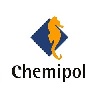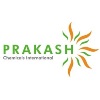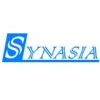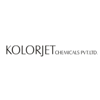Language: English | Vietnamese
Call: +84 (0)8 5446 7189 | info@bansertra.com
Chemical Specialties for Coatings & Inks
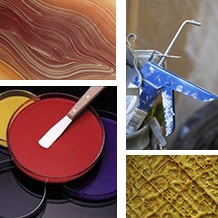
We work very closely with many suppliers to provide our customers with product selection and recommendation to meet their specific requirements.
Our product portfolio consists of biocides, pigments, colorants, additives, and other specialty chemicals.
Biocides for In-can and Dry Film Preservations
Our supplier in Barcelona, Spain is the leading manufacturer of all kinds of biocides which are applied for water-based systems in coatings, inks, polymer emulsions, adhesives, construction chemicals, metal working fluids, detergents and others to protect against microbial development.
Biocides for In-can
Many technical waterborne products are a suitable medium for microorganisms growth. The presence of organic compounds, such as thickeners, surfactants, wetting agents, polymers in water based systems is an excellent nutrient combination for bacteria and fungus. A microbiolgical attack may decompose the technical product, loosing all the properties and becoming useless. Contaminated raw materials, not enough hygienic production processes, incorrect manipulation of the product can be the origin of a contamination.
All these facts indicate the importance of the use of a biocide to protect a technical waterborne product, preventing a possible contamination. The selection of a biocide is not an easy task. There are some conditions that must be taken in account:
- Be compatible with the product to protect
- Be stable into the formulation
- Be effective against the typical harmful microorganisms
- Be cost – effective
» Available Samples:
BIOPOL TK 1 is a broad spectrum biocide based on water based combination of CMIT/MIT and formaldehyde. It is suitable for the preservation of a broad range of waterborne products. The balance of its active ingredients reduces the risk of contact allergic.
Application: dispersion paints, dispersion plasters, polymer dispersions, glues, adhesives and sealants.
The optimum dose of BIOPOL TK 1 as preservative should be determined by the means of challenge tests in our laboratories, but we can recommend a dose between 0,05 an 0,30 % depending on the application.
Dry Film Preservations
Protective coatings exposed to severe or extreme environmental conditions are easily attacked by fungus, yeasts or algae. This kind of contamination cause degradation and deterioration of the coating film and it may become a sanitary problem. It can also affect the coated surface. Fungus can be found in interior and exterior coatings, while algae are more normal in exterior coatings as they need natural light for growing. A high moisture level in the environment is a key factor for their development. Other factors as pH, temperature, light, nutrients condition the growth of these microroganisms.
The use of fungicide – algaecides protects the coating film against the attack of these microorganisms prolonging the life of the protective coating. The selection of the fungicide – algaecide product must be done according to the followingrequirements:
- Effectiveness
- Long-term protection (2 – 3 years)
- No water soluble
- Low Vapour pressure
- Compatible
- Stable
- Ecologically acceptable
- Easy to use
- Cost – effective
» Available Samples:
FUNGIPOL 351 is a broad spectrum fungicide and algaecide based in a combination of octyl isothiazolone, carbendazime and diuron . It is effective against fungus, algae and yeasts. The combination of these active gives to FUNGIPOL- 351 excellent microbicide properties.
FUNGIPOL 351 is an excellent dry-film preservative for dispersion paints, dispersion plasters, glues, adhesives, sealants and plastics. The optimum dose of FUNGIPOL-351 as preservative, should be determined by the means of challenge tests in our laboratories, but we can recommend a dose between 0,8 – 2,0 % depending on the application.
Disinfectant for Contaminated Surfaces
SANIPOL 75 is based on a combination of disinfectant and fungicide actives ingredients with broad spectrum effect. It free of CMIT/MIT and formaldehyde. It has a low VOC content.
SANIPOL 75 is an excellent disinfectant agent for decontaminating surfaces with strong development of fungus, algae or other microorganisms. It is also recommended as preventive treatment of surfaces with extreme environmental conditions.
Defoaming Agents
A coating is a complex formula of several components. Some of them are interface-active additives that allow the foam formation during manufacturing, packing and/or application. Thisfoam is not acceptable as it can cause several undesirable effects, especially during application.
The defoaming agents are designed to avoid the foam formation by interacting at the surface of the liquid, breaking the foam lamellae. To be effective the defoaming agent must be insoluble to the medium. The addition of ultra-fine solid particles incompatible with the liquid improves the effectiveness of the defoaming agent.
We can differentiate between defoaming agents and deaerating agents. A defoaming agent is intended for the destruction of the macrofoam at the surface of the liquid. The deaerating agent is supposed to remove the air that has been mixed into the coating film during application as quickly as possible.
The current defoaming agents can be grouped into those based on mineral oil and those based on silicones. The first group are formulated with some additives to improve the effectiveness like hydrophobic solids or emulsifiers. The second group are generally polysiloxanes, and they can be complemented with hydrophobic polyethers. They are more suitable for high-gloss systems. The deaerating agents are normally based on special organic polymers, polysiloxanes, organically modified polysiloxanes or fluorosilicones.
» Available Samples:
DENSIPOL PA 31 is a defoamer for emulsion coatings and glues based on hydrocarbons and non-ionic surface agents. It is a liquid defoamer with a wide application range. It is not only effective during production, but it is still active during the use of the product. It is free of silicones.
DENSIPOL PA 31 has an excellent performance when used for products based on different types of emulsions as styrene acrylic, acrylic, alkyd, styrene butadiene, acetate de polyvinyl. The recommended dose for emulsion coatings is between 0.2 and 0.5 %. For glues, the doses are between 1 et 2 %. These recommendations are based on the total weight of the formula.
White Colour Improvers
The quality of the white colour in coatings industry is of great importance. The production of high quality coatings with a high content of titanium dioxide and fillers of good quality allows obtaining coatings with an excellent white colour.
When producing economic coatings, the cost of the formulation is a key factor. The use of cheap fillers and the low content of titanium dioxide condition the whiteness of the coating. The use of some pigments (blue or violet) improves its white colour, as bluish white is always whiter than yellowish white. But, the capacity of these pigments to hide the yellow tone of the coatings is limited.
A different way to improve the white colour of coatings is using special colorants capable of transforming the UV light into visible spectra. This gives to the coating a bright white of higher quality compared with the quality from traditional pigments.
These products are compatible with most of the coatings formulations in its range of use. Some variations on the viscosity are observed, but generally are not important on the final characteristics of the coating. In certain cases, there are increases of viscosity that can derivate to some undesirable effects (flocculation, gelification). Tests are recommended to be carried out before any industrial trials to verify the compatibility with coatings formulation in a short and long term.
» Available Samples:
CHEMIPOL UV 05 is recommended as an additive that increases the optical perception of the white colour when it is exposed to the natural light. CHEMIPOL UV 05 is used in coatings with a low content of Titanium Dioxide, where it gives a whitening effect by reflecting the UV radiation received. It is compatible with the majority of the formulations of decorative paints and plasters. The usual dosage varies between 0.2 and 0.6 %, based on the total weight of the paint.
Dispersing Agents
CHEMICRYL-500/C is a polyelectrolyte derived from an acrylic terpolymer. Its medium to high molecular weight offers an excellent performance when dispersing inorganic fillers and powder pigments. Its activity is independent of the pH of the system. CHEMICRYL-500/C does not modify the abrasion resistance of the coatings. CHEMICRYL-500/C is an excellent dispersing agent of fillers and pigments in aqueous emulsion coatings. The recommended doses for aqueous emulsion coatings of CHEMICRYL-500/C is between 0,2 and 0,4 %.
Wetting Agents
DETERSOL AL 74 is a non ionic wetting agent based on a mixture of etoxilated alcohols. It is an excellent wetting agent for the correct development of the colour in the coatings. DETERSOL AL 74 also improves the dispersion of the mineral fillers avoiding the problems derived form the flotation and flocculation phenomena. DETERSOL AL 74 does not change the abrasion resistance of the coatings.
DETERSOL AL 74 is an excellent wetting agent for the white aqueous coating bases used in the automatic coating tinting systems. It is also an excellent complement for the dispersing agents for pigmented coatings. The recommended doses for aqueous emulsion coatings of DETERSOL AL 74 is between 0,2 and 0,6 %.
Pigments Paste
Pigments Powders
Decorective Bases
UV Currable Chemicals
Dryers
» Benzyl Alcohol (Tech/USP/Photo/NF)
» Calcium Octoates (3% / 5% / 10%)
» Cobalt Octoates (3% / 6% / 8% / 10% / 12%)
» Copper Octoates
» Ethyl Acetate
» Lead Octoates (18% / 24% / 36%)
» Manganese Octoates (6% / 8% / 10%)
» Methyl Ethyl Ketoxime
» Zinc Octoates (6% / 12% / 18%)
» Zirconium Octoates (6% / 12% /18%)
Finished non-stick coatings
» Teflon

